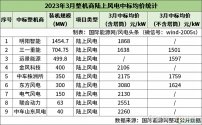An important source of CAT is strong vertical wind shear, which is prevalent especially within the atmospheric jet streams. The wind shear creates regions of low Richardson number (Ri), in which unstable Kelvin–Helmholtz waves can grow and ultimately break down into turbulence (Lane et al.,
). There are several other important sources of CAT, including airflow over mountainous terrain (Lilly,
), the effects of remote convection (Koch & Dorian,
; Uccellini & Koch,
), and loss of balance (Williams et al.,
,
,
). In these cases, gravity waves are formed and may propagate far away from the source region, eventually producing turbulence remotely when they either break or induce shear instabilities.
Because CAT is invisible and cannot be foreseen by pilots or onboard radar, the aviation sector relies on operational turbulence forecasts that are produced using numerical models. Turbulence in the atmosphere is energized from the planetary scale down to less than 1 cm. The turbulent eddies that cause aviation turbulence, however, typically occur on a reduced set of scales from around 100 m to 1 km. Computer processing speeds are currently not sufficient to explicitly simulate motions on these scales (Sharman et al.
), except for a few detailed case studies (e.g. Lane et al.,
). Therefore, diagnostic indices from numerical weather prediction models are used to identify and forecast regions likely to contain CAT. The diagnostics generally assume that the smaller-scale turbulence is formed as a result of conditions set by the large-scale flow. Commonly used indices include variant 1 of the Ellrod and Knapp turbulence index (TI1), which has been shown to forecast up to 75% of CAT (Ellrod & Knapp,
), the negative Richardson number (−Ri), the Colson–Panofsky index (Colson & Panofsky,
), the Brown index (Brown,
), and the potential vorticity. Some indices, such as the Richardson number, explicitly diagnose a physical mechanism in the atmosphere that is known to cause CAT and are rigorously derivable from the equations of fluid dynamics via a stability analysis. Others, such as the Ellrod and Knapp (
) indices, are more empirical but have nevertheless been found to be skillful indicators of CAT.
Jaeger and Sprenger (
) produced a Northern Hemisphere climatology of CAT diagnosed from ERA-40 reanalysis data covering the period 1958–2001. ERA-40 has a spectral resolution of T159 horizontally, which corresponds to approximately 90 km in the midlatitudes. A positive trend in moderate-or-greater (MOG) turbulence was found for the four indices that were calculated: TI1, Brunt–Väisälä frequency (
N2), Richardson number (Ri), and potential vorticity. These findings suggest that climate change may be increasing the occurrence of CAT. Jaeger and Sprenger (
) also found maximum probabilities of MOG turbulence over the east and west coasts of North America, with other local maxima over the Himalayas, central Europe, eastern China, and the western parts of the North Atlantic and North Pacific.
Our current understanding of the response of CAT to climate change has been summarized by Williams and Joshi (
) and is part of a package of work being carried out in the burgeoning research area of climate impacts on aviation (e.g., Coffel & Horton,
; Irvine et al.,
; Karnauskas et al.,
; Williams,
,
; Williams & Joshi,
). In particular, Williams and Joshi (
) used climate model simulations to diagnose 21 different CAT indices and thereby study how a doubling of the atmospheric carbon dioxide (CO2) concentration could impact the amount of CAT on transatlantic flights in winter at 200 hPa. The north Atlantic flight corridor is one of the busiest in the world, with more than 300 flights per day in each direction (Irvine et al.,
). From the 21-member ensemble of CAT indices, Williams and Joshi (
) calculated a 10–40% increase in the median strength of CAT and a 40–170% increase in the frequency of occurrence of MOG CAT in this region, in the doubled-CO2 simulation compared to a preindustrial control run. This was the first study to calculate how climate change may impact CAT in the future. Williams (
) subsequently extended the calculations to study the individual responses of light, moderate, and severe turbulence, finding large and significant increases in each case.




